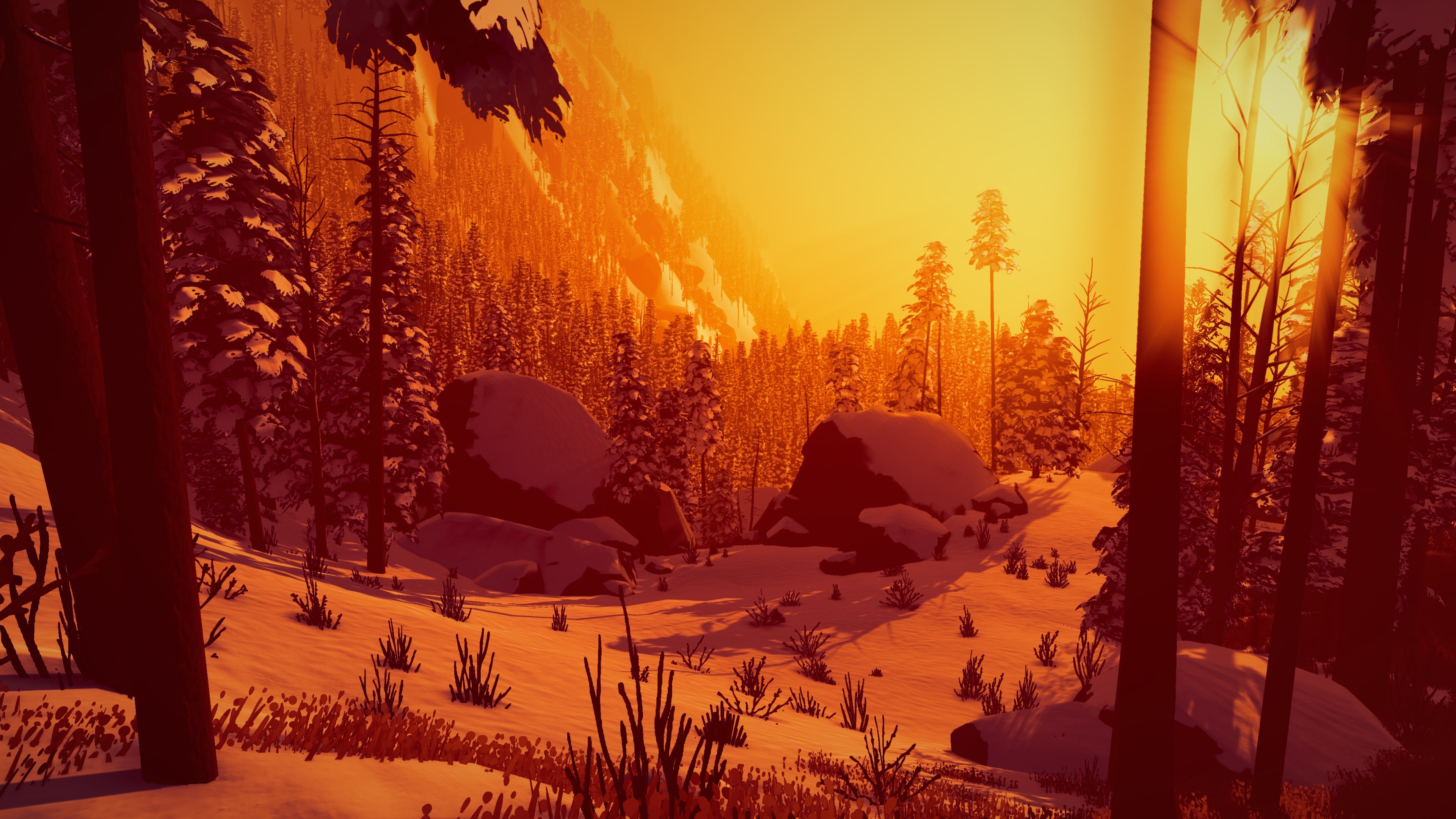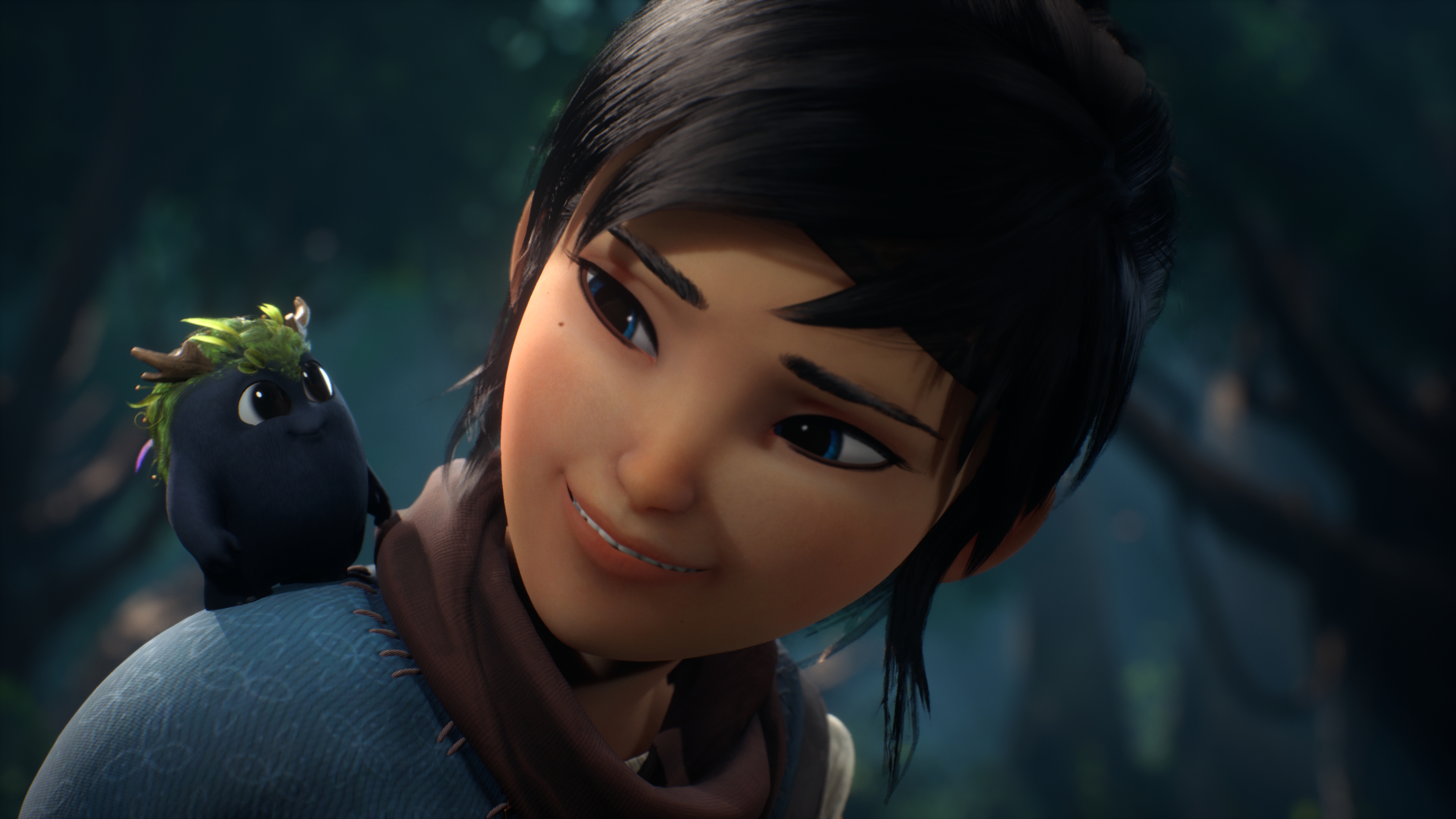Arctic Awakening brings the narrative adventure to the frozen north for an exploration of "friendship, isolation, and mental health"
How Arctic Awakening is a climate change parable and sci-fi thriller wrapped up in one episodic adventure game
Your plane has crashed in the middle of an unforgiving environment, hundreds of miles away from civilization. You're the only one who made it out of the landing alive, and must now work to survive and conquer the wilderness using little more than the resources you can scavenge and tools that you can build. You've likely faced this kind of situation a dozen times before, in other words.
But while the setup for Arctic Awakening may sound familiar, Goldfire Studios' console debut is anything but. Just take a look at the reveal trailer for this episodic adventure, which premiered at the Future Games Show – Spring Showcase, and you'll see glimpses of the game's true nature; a story about humanity in a landscape utterly bereft of it.
"On the surface, Arctic Awakening is a story that deals with the struggle to survive in a harsh Arctic environment while simultaneously uncovering the mysteries surrounding the sci-fi elements of this unusual place you’ve crash-landed in," says game director James Simpson. "However, going deeper, this is really a more intimate story that explores friendship, isolation, and mental health. It is very much a character-driven story, and we really hope players connect with the characters on an emotional level, like our team has while crafting their stories."
Awake my soul

Though your character, Kai, is very much lost and isolated at the start of Arctic Awakening, you won't be quite so alone in your quest to stay alive. You'll be accompanied by Alfie, a flying robot housing the artificial intelligence of a fully-dimensional human, who'll be constantly on hand to provide assistance and companionship throughout the events of the game.
"You can talk to him just like any real person," says Simpson, "and his job is that of a psychotherapist for Kai. However, this isn't by choice for Kai, and their relationship is quite strained at the start of the story because of it. Alfie has the capability to be very useful in a variety of ways, but that also somewhat depends on the choices you make as Kai and how their relationship evolves."
As seen in the Future Games Show reveal, you'll be able to interact with Alfie through Arctic Awakening's comprehensive dialogue system, which forms a large part of how it tells its story, including that of Kai's moment-to-moment survival against the odds. In fact, Simpson stresses that Arctic Arrival is "very much a story experience which just so happens to revolve around a survival situation", meaning you'll be spending more time making narrative decisions, exploring the world, and talking to Alfie than chopping down trees to fashion a new wardrobe.
"The survival gameplay comes through more in the decisions that you make and how well you work with your co-survivors," continues Simpson. "You won’t have the pressure of dealing with managing resources or getting caught in death spirals, but rather experiencing the survival aspects as the characters to drive the narrative forward. I've always felt that games can be the ultimate storytelling medium with their unique ability to transport you as the player into the shoes of the character. I can’t reveal the entire inspiration for the story without spoiling it, but the general idea for a different kind of survival story with a near-future sci-fi setting had been bouncing around for years in one form or another."
Weekly digests, tales from the communities you love, and more

One of the broader inspirations for Arctic Awakening, however, was that of climate change. The studio is particularly focused on the concerning effects of global warming on the Arctic region itself, which helped Goldfire clarify the prescience of its story. In order to ensure authenticity in its recreation of the polar north, Goldfire Studios undertook vast amounts of first-hand research, from collating geological satellite data to, according to Simpson, "actually learning to fly a real plane".
"Early in the writing process, I spent a week isolated with no phone or internet in a remote cabin high in the mountains during blizzard season," she reveals. "I gathered hundreds of reference photos, videos, and notes while hiking through the same sorts of weather and terrain that our characters might experience. This proved invaluable both for the story and for the visual and audible elements of the game."
That said, Arctic Awakening adopts a more stylistic approach when it comes to art style, so don't expect a photorealistic tour of the frozen wilds from its first-person perspective. Instead, the game's visuals are designed to enhance and enrich its narrative focus, particularly when it comes to the range of breathtaking colour palettes afforded by this unique biosphere.
"We've made careful use of colors to support the emotional story beats as well as to differentiate between areas and elements of the game world, times of day and states of weather," says Simpson. "This reliance on color lends itself to a stylized look; however, we wanted to find a middle-ground that didn't distract from the weight of the themes with a look that was too cartoony. The ultimate goal is to transport the player so they feel what the characters feel – the extremes of the environment, the mystery of strange structures, and the awe of jaw-dropping vistas."
Snow business

"I spent a week isolated with no phone or internet in a remote cabin high in the mountains during blizzard season."
James Simpson
Perhaps most interestingly of all, Goldfire Studios is pitching Arctic Awakening as an episodic adventure, adopting a release structure that a number of developers are now increasingly turning away from. I ask Simpson about the decision to tell its story in this way, who explains the studio's desire to provide players with "the time and space to really explore a character and how they evolve over time."
"The episodic format is also great because it breaks the story up into easily digestible chunks with more well-defined starting and stopping points, making it less of an up-front time commitment to get started. However, many episodic games stretch their release schedule too far, which is why we are committed to a predictable monthly release cycle across five episodes so that you don’t have to wait months to find out what happens next."
Goldfire's commitment to avoiding one of the biggest pitfalls of the episodic narrative game suggests the studio has a competent grasp of the genre which it hopes Arctic Awakening will revitalise for the next generation. The idea of an Arctic-set Firewatch certainly sounds appealing, but Arctic Awakening promises to be much more than the sum of its muses when it releases for PC and console sometime next year.
For more, check out all the biggest new games of 2021 to keep an eye on, or watch our preview of the Outriders demo in the video below.
I'm GamesRadar's Features Writer, which makes me responsible for gracing the internet with as many of my words as possible, including reviews, previews, interviews, and more. Lucky internet!




